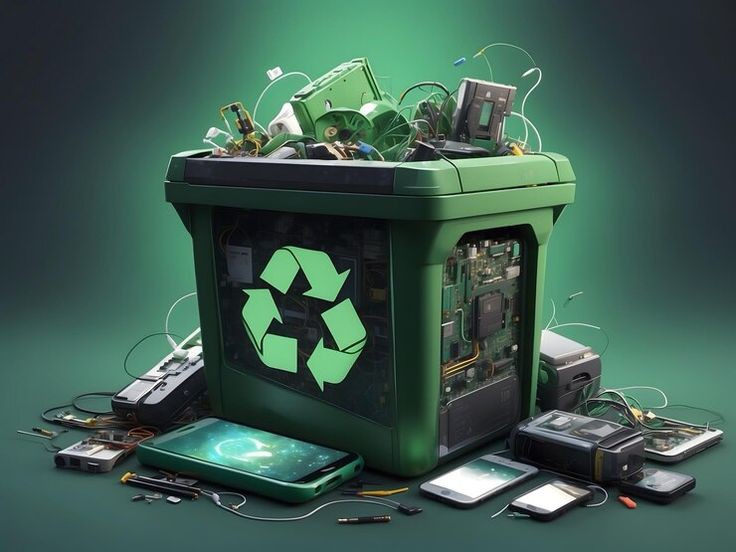In an era where sustainability is paramount, recycling industries play a crucial role in reducing waste and conserving natural resources. The process of reusing materials not only helps in environmental conservation but also in economic savings. Here’s an in-depth look at how various materials are recycled and reused, contributing to a more sustainable future.
Paper Recycling
Paper recycling involves collecting, sorting, and processing used paper to produce new paper products. This process significantly reduces the need for raw materials and energy.
Process
- Collection and Sorting: Used paper is collected from households, offices, and recycling centers. It is then sorted into different grades.
- Pulping: The sorted paper is mixed with water and chemicals to break it down into fibers.
- Cleaning and De-inking: The pulp is cleaned and de-inked to remove any contaminants and ink.
- Forming and Drying: The clean pulp is spread out on screens to form sheets, which are then dried and rolled into new paper.
Uses of Recycled Paper
- Newspaper, cardboard, office paper, and tissue products.
Plastic Recycling
Plastic recycling involves recovering scrap or waste plastic and reprocessing it into useful products. This process helps mitigate plastic pollution and reduces the demand for new plastic production.
Process
- Collection and Sorting: Plastics are collected and sorted by type and color.
- Shredding and Washing: The sorted plastics are shredded into small pieces and washed to remove impurities.
- Melting and Reforming: The cleaned plastic is melted and reformed into pellets or new products through extrusion or molding.
Uses of Recycled Plastic
- Packaging materials, construction products, textiles, and automotive parts.
Glass Recycling
Glass recycling involves melting down used glass to form new glass products. Since glass can be recycled indefinitely without losing quality, it is an excellent candidate for sustainable reuse.
Process
- Collection and Sorting: Glass is collected and sorted by color to maintain the quality of recycled glass.
- Crushing and Cleaning: The sorted glass is crushed into small pieces, known as cullet, and cleaned to remove any contaminants.
- Melting and Forming: The cullet is melted in a furnace and reformed into new glass products.
Uses of Recycled Glass
- New bottles and jars, fiberglass, and construction materials like glassphalt.
Metal Recycling
Metal recycling involves processing scrap metal to make new metal products. Recycling metals conserves natural resources and reduces energy consumption compared to extracting and processing virgin ore.
Process
- Collection and Sorting: Metals are collected and sorted by type (e.g., aluminum, steel, copper).
- Shredding and Melting: The sorted metals are shredded and then melted in furnaces specific to each metal type.
- Purification and Solidifying: The molten metal is purified to remove any impurities and then solidified into ingots or new products.
Uses of Recycled Metal
- Automotive parts, construction materials, appliances, and packaging.
Textile Recycling
Textile recycling involves processing used clothing and fabric scraps into new textiles. This process helps reduce the environmental impact of the fashion industry.
Process
- Collection and Sorting: Used textiles are collected and sorted by type, quality, and color.
- Shredding and Cleaning: The sorted textiles are shredded into fibers and cleaned.
- Spinning and Weaving: The fibers are spun into yarn and woven into new fabric.
Uses of Recycled Textile
- Clothing, insulation materials, carpet padding, and industrial rags.
Electronic Waste Recycling
Electronic waste (e-waste) recycling involves recovering valuable materials from discarded electronic devices. Proper recycling of e-waste prevents hazardous substances from polluting the environment.
Process
- Collection and Sorting: E-waste is collected and sorted by type (e.g., computers, smartphones).
- Disassembly and Shredding: The devices are disassembled, and components are shredded for easier separation.
- Material Recovery: Valuable metals (e.g., gold, silver, copper) and other materials are extracted through chemical and mechanical processes.
Uses of Recycled E-Waste
- New electronic devices, jewelry, and industrial metals.
Recycling industries are essential in transforming waste materials into valuable resources, thereby promoting sustainability and reducing environmental impact. By understanding and supporting the processes of recycling paper, plastic, glass, metal, textiles, and e-waste, we can contribute to a more sustainable future. Each material’s recycling process not only conserves resources and energy but also reduces pollution and greenhouse gas emissions, demonstrating the critical role recycling plays in achieving environmental conservation and economic efficiency.

